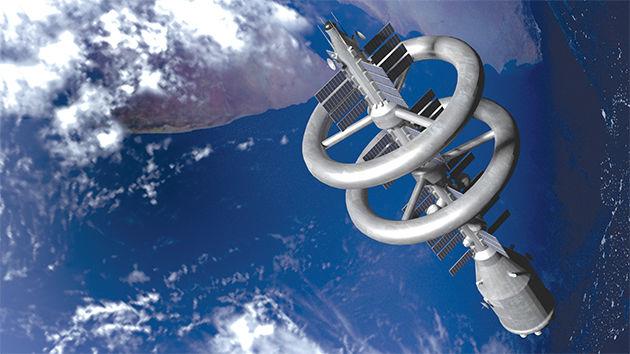A recent NASA paper suggests a device that propels objects by shooting microwaves into a closed metal cavity may actually work — but a lot of scientists are still not convinced.
Ever since the initial claims of a working Electromagnetic Drive surfaced in 2001, there has been a lot of controversy surrounding this “impossible drive.” The main problem is that it seems to violate Newton’s Third Law of Motion — it produces thrust, but there is no equal and opposite force that accompanies the thrust.
According to Adonios Karpetis, associate professor of aerospace engineering, its violation of Newton’s Third Law may only be the beginning of the drive’s problems.
“When the power is turned off, the force goes to zero exponentially, or, you know, slowly, and that is an indication of thermal response,” Karpetis said. “It’s an indication of heat being dissipated by radiation, or even by conduction or convection when they’re outside the oven, so there may be thermal effects that they’re not accounting for.”
At the scales the NASA experiment was conducted, thermal error can be a considerable issue. Karpetis said the only conclusive way to prove that the drive works is to scale it up beyond the point of thermal error having any effect.
But according to Nicholas Suntzeff, physics and astronomy professor, that may not be necessary.
“If this thing violates the third law of Newton, something that’s been around for a long time and works really well, then you gotta think now this is, it can’t be right,” Suntzeff said. “The idea of this machine is like sitting in your car and pushing on the windshield and expecting your car to go forward.”
The NASA scientists proposed a solution to this — pilot wave theory. Created in 1927 by Louis de Broglie and popularized by David Bohm in 1952, it states that every particle in the universe is guided along its path by a wave that controls everything the particle does. Conveniently, this theory also necessitates a fluid-like vacuum that can transfer momentum.
According to Jeremy Holt, professor of physics and astronomy, something like this is possible with matter-antimatter pairs of particles.
“We think that there is some underlying medium or field, and then everything we actually observe are really just excitations of those fields,” Holt said. “And so whenever you try to excite the vacuum, you can only do so by creating sort of equal and opposite excitations, like whenever you try to create a particle, out of this field, you leave a hole, and that hole is its antiparticle.”
Drawing on this theory, it seems possible that the microwaves from the device could be causing a similar effect and thereby transferring their momentum to the particle-antiparticle pairs created within the device.
However, there is reason to think otherwise. According to Suntzeff, not only is this momentum transfer impossible, but pilot wave theory in its entirety is flawed.
“Einstein believed that there were hidden variables in quantum mechanics, that quantum mechanics, that reality is not just a probability but there’s actually something fundamentally, a particle underneath it all,” Suntzeff said. “He proposed a way of looking at it, someone named John Bell came along and showed that you could. Then when experimentalists went out and did the statistics they found, indeed, Bell’s Theorem was violated, and it was not consistent with hidden variables.”
While the experiment revealed very little about the cause of the strange phenomenon, there is, according to Suntzeff, always a chance that something like this could work.
Excitement about Electromagnetic Drive may be premature, according to Texas A&M experts
January 24, 2017
Photo by Graphic by Alex Sein
A&M professors are speculating on the physics of the EM Drive, which has the potential to move objects around, including satellites in outer space like the one shown above.
Donate to The Battalion
Your donation will support the student journalists of Texas A&M University - College Station. Your contribution will allow us to purchase equipment and cover our annual website hosting costs.























